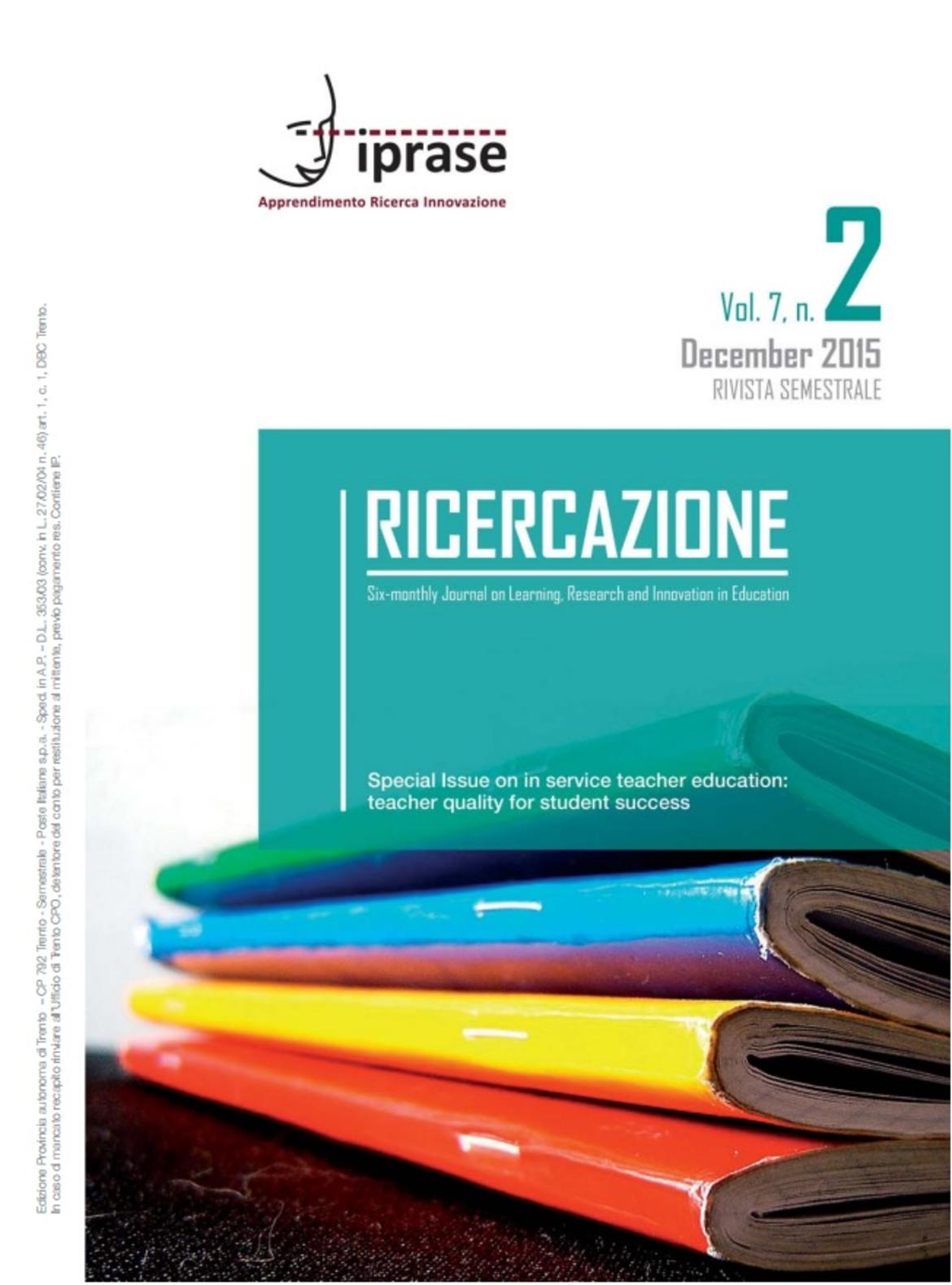IN SERVICE TEACHER EDUCATION: TEACHER QUALITY FOR STUDENT SUCCESS - SPECIAL ISSUE - VOLUME 7 n° 2
December
2015

With this special issue we intend to contribute to the debate on in service teacher education from a technical and scientific viewpoint, publishing a series of articles aiming to answer the following questions, among others:
- How can we plan teacher learning about quality profiles in teaching?
The publication pursues four main goals:
- Offering international benchmarking elements that argue for the need to define a teacher quality profile, followed by accreditation practices for the teaching profession;
- Providing political decision-makers, training coordinators and principals with a series of recommendations which guide the design of training activities, the choice of content and of in-service training methods;
- Weighing the pros and cons of the two general strategies for in-service training (based on accountability duties and standards or on collective capacity building);
- Discussing practices, systems and models for the assessment of training outcomes regarding the transfer of knowledge to the classroom and the impact on students.
This special issue contains thirteen articles, by scholars from different European countries (Italy, Austria and Germany) and different disciplines (Psychology, Sociology, Pedagogy, Economics, etc.). Moreover, there are at least three types of articles: literature reviews, good practice reviews and empirical papers.
The articles collected in this volume throw light on various aspects of teacher development, but do not answer all the questions initially posed. Various forms of in-service training and, more recently, (continuous) professional development have been employed by different providers to make headway in terms of school improvement, yet we still know little about the effects these changes have on the outcome of student education and learning. In a review of in-service training, Timperley et al. (2007) deal with the major challenge of revealing “the black box recording professional learning opportunities for teachers and results that have a positive impact on student outcome” (p. 7). However, their findings show that little is known about how teachers utilise the special skills developed during professional learning opportunities or the consequential impact of these on teaching practices. The findings of the articles collected together in this volume could therefore contribute to a better understanding of in-service training, through which teachers, school managers and policy makers can individually and collectively create the conditions for teachers to reveal the ‘black box’ recording the link between professional learning and student learning in the classroom.


